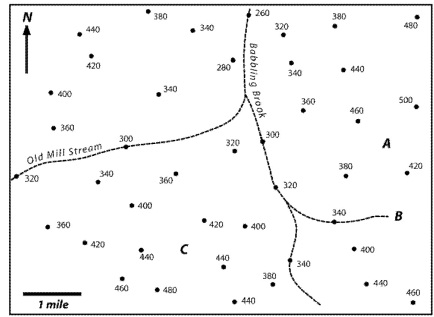Reference no: EM132723096
EE 534-01-201 Optical Communications - King Fahd University of Petroleum and Minerals
Objective:
Investigate the effect of loss on optical system performance and characterize the system with the power budget equation. Use OptiSystem to optimize the fiber length of a communication system.
Theoretical Questions:
1. Convert 0 dBm to Watts.
2. A 5 dBm signal is sent through a component and detected at its output as 0.5 mW, what is the loss of the component in dB?
3. Determine the maximum length of optical fiber that should be used in the 1 Gb/s system in Figure 1 below, to obtain a 6 dB power margin. Assume a -30 dBm receiver sensitivity.

System Performance:
Refer to the system in Figure 1 and build it in OptiSystem. Correctly set the power and bit rate of the optical transmitter to 2 dBm and 1 Gb/s respectively. To simulate a receiver with a -30 dBm sensitivity set the PIN photodiode's Thermal power density to 15e-24 W/Hz. You will need to place the following components:
• Optical Transmitter Transmitters Library/Optical Transmitters
• Optical Fiber Optical Fibers Library
• Connector Passives Library/Optical/Connectors
• Gaussian Optical Filter Filters Library/Optical
• Low Pass Gaussian Filter Filters Library/Electrical
• PIN Photodiode Receivers Library/Photodetectors
• 3R Regenerator Receivers Library/Regenerators
• BER Analyzer Visualizer Library/Electrical
Set the optical fiber length to the value calculated in question 3 and simulate the Fig. 1 point-to-point optical fiber link. You should be achieving a BER of around 1e-4 to 1e-5.
Effect of Loss on System Performance
A more accurate calculation of the bit error rate can be performed if a larger pseudo random bit sequence (PRBS) length is used for the simulation. In the layout properties, change the sequence length from 128 to 1024.
Questions from the Simulation (Unoptimized system):
4. Create a sweep of the optical fiber length and vary it from 15 km to 25 km with a coarse step size of 1 km. Plot the Q factor as a function of fiber length (use MS excel, MatLab or any other plotting software). Show the plot and the simulation window (complete block diagram similar to Fig. 1) in the report.
5. Do calculations and discuss the trend of the BER, whether the system is attenuation limited or dispersion limited. Assume the material dispersion at 1550 km is 16.5 ps/nm.km and that the waveguide dispersion is negligible. The default linewidth of the laser source is < 0.1 nm.
6. By fine sweeping again the fiber length (in this case at small step size of 0.1 km near the approximate fiber length that gives a Q factor of 8, as determined from question 4) while placing an optical power meter before the photodiode, plot the (i) Q factor as a function of fiber length, (ii) Receiver sensitivity (i.e. the received power that is monitored by the power meter placed before the photodiode) as a function of fiber length, and (iii) minimum BER as a function of fiber length. Show these plots in the report. From the plots, determine the receiver sensitivity required for a desired Q factor of 8 and the corresponding fiber length. Note: BER should be plotted log (BER)
7. Now compare the fiber length obtained from question 4 with that obtained in question 6 at a the Q factor of 8. Which one is more accurate? Discuss in the report.
Optisystem Optimizations:
OptiSystem has a built-in optimizer tool that can make designing a system simpler. In this section, the proper procedure for setting up an optimization will be demonstrated.
Starting from the same project file as used above, an optimization will be run to determine the optimal bandwidth of the Gaussian filter. For this set the fiber length to 23 km.
Using the procedure in the Appendix, the cutoff frequency should be optimized to around 505 MHz for this system or between 500 to 700 MHz.
Note: The above part of optimization following the appendix is for you to assure that the cutoff frequency is indeed in the range given above. This is optional.
Questions from the Simulation (Optimized system):
8. Now, set the cutoff frequency of the Gaussian low pass filter to 505 MHz and repeat questions 4 and then question 6. Show all your plots.
9. Compare the new BER value, receiver sensitivity and length of the fiber of this optimized system with the BER, receiver sensitivity and length of the fiber obtained in question 6 (unoptimized system). How much reduction in the receiver sensitivity is observed in this optimized system when compared to unoptimized system at a Q factor of 8? Moreover, how much increase is the fiber length is observed in the optimized system compared to the unoptimized system at a Q factor of 8?
10. Estimate the improvement in the power margin of the optimized system from question 9.
Attachment:- OptiSystem-Simulation.rar